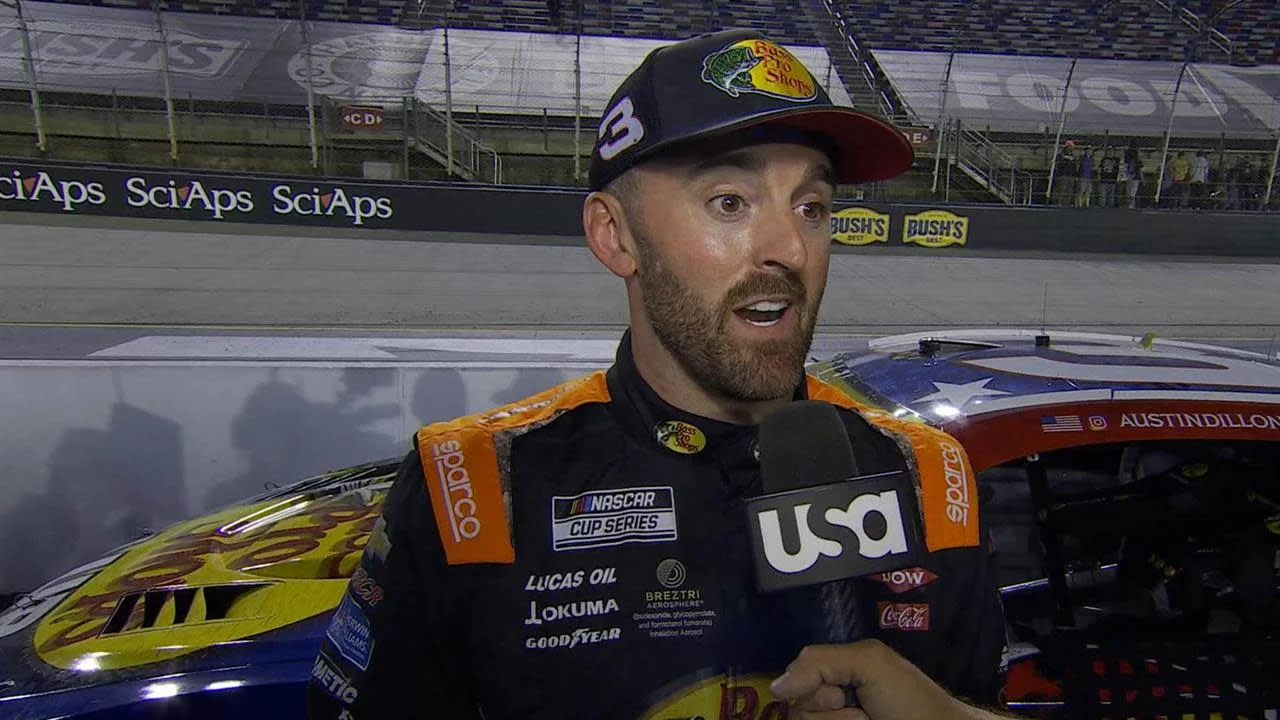Austin Dillon shared details in a revealing interview about the tire challenges that disrupted his run at the Bristol race, shedding light on how quickly the night turned after early promise. The Austin Dillon tire issues interview offers insight into the unexpected problems faced by his team and the broader implications for competitors during the event.
Initial Optimism Turns to Rapid Trouble on Track
Heading into the race at Bristol, Austin Dillon expressed confidence in his car’s competitiveness, prepared to challenge in a critical playoff setting. However, an unexpected tire problem emerged before the race reached its 30th lap, changing the outlook for Dillon and his team almost immediately.
Dillon described how quickly circumstances shifted: he initially believed he was only dealing with a flat tire, not realizing how rapidly his tires were deteriorating. This cording issue, reminiscent of a previous race, forced the team to reconsider their approach on the fly.
He explained that practice sessions showed no signs of tire wear, and noted the most likely reason for the abrupt change was a difference in temperature between practice and race conditions. This meant drivers like Dillon could not push their cars to the limit, instead having to slow their pace to preserve tires, turning the competition into a battle of tire management rather than outright speed.
Adjusting Strategies as the Race Progressed
The shift in strategy was made more difficult by Dillon’s desire, and that of his sponsors like Bass Pro Shops and Winchester, to compete for top results on the biggest stage. Yet, the unfolding circumstances made it impossible to race aggressively under the tire constraints and left a sense of missed opportunity for both the driver and his team.
When asked about the effort to recover after the setback, Dillon acknowledged his crew’s determination, saying they worked hard to regain track position and leverage wave-arounds when possible.
He recounted the challenging reality that even with these efforts, the car simply could not maintain speed or tire life as required. Attempting a strong run led to tires degrading within 21 laps, forcing Dillon to prioritise survival over progress while hoping for race dynamics to fall in his favor.
“Well, we didn’t process it fast enough. I just thought we had a flat tire and I was losing the right front. I didn’t know we were cording tires that fast. I just thought we were tight and then I was like, well, fired off fine and it was cording just like they did that one race a year ago so or.” —Austin Dillon, Driver
“It’s unfortunate. I know NASCAR doesn’t want that to be the race for the playoffs because you want to be able to go out and race it out, and our car didn’t have any problems, no tire wear in practice. I’m guessing the temperature change is the biggest thing, and we just weren’t able to race hard.” —Austin Dillon, Driver
“We wanted to be able to race hard and it came in to just a putting-around-trying-to-make-tires-live kind of race and our car wasn’t good for that.” —Austin Dillon, Driver
“The guys were trying so hard to get us back on the lead lap trying to get things to fall right, but truthfully our car, we couldn’t go as long as we needed to, as fast as we needed to.” —Austin Dillon, Driver
Implications for Playoff Standings and Future Races
While Dillon’s battle with tire cording ultimately kept his team from advancing, he reflected that even a mid-pack finish could have sufficed for playoff advancement if not for the early setback. His comments point to how rapidly race fortunes can change under unpredictable conditions and underscore the fine margins that define progression in the NASCAR playoffs.
The night’s broader impact reached beyond Austin Dillon, as teams across the field contended with similar tire issues under fluctuating track conditions at Bristol. The experience left NASCAR, sponsors such as Bass Pro Shops, and partner organizations like Kaulig Racing and Rick Ware Racing to assess how such circumstances may shape future race strategies, as the playoffs continue to deliver unexpected challenges for drivers, crews, and fans alike.
